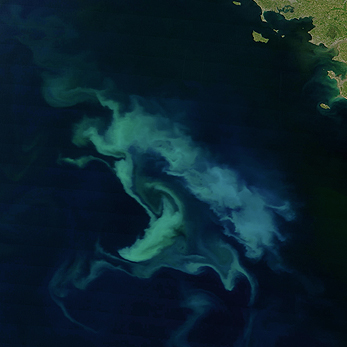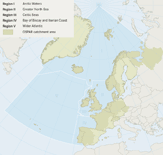Nutrients, especially nitrogen and phosphorus, are essential for the growth of aquatic plants which form the basis of marine food webs. Natural processes regulate the balance between nutrient availability and the growth of marine plants and animals in ecosystems. Excess nutrients introduced into the sea by human activities can disturb this balance and may result in accelerated algal growth, leading to adverse effects on water quality and marine ecology. This process is known as eutrophication. OSPAR works under its Eutrophication Strategy to combat eutrophication and to achieve a healthy marine environment.
OSPAR Strategy objectives for eutrophication
- Combat eutrophication in the OSPAR maritime area in order to achieve and maintain, by 2010, a healthy marine environment where eutrophication does not occur.
- Reduce inputs of nitrogen and phosphorus to areas affected by or likely to be affected by eutrophication in the order of 50% compared to 1985.


